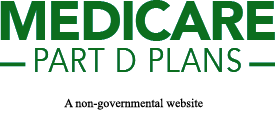Find a Medicare Part D prescription drug plan

Medicare Part D
Plans 2025
Medicare Part D Premiums 2025
Ready to learn about your Medicare Part D premium for 2025? Prepare for adjustments including a $2,000 out-of-pocket cap.
This article explains the new rate changes and offers actionable advice on handling your Medicare Part D expenses as policy shifts shape your coverage options for Medicare Part D Plans in 2025.
Key Takeaways
- The Medicare Part D out-of-pocket prescription drug costs are capped at $2,000 for 2025, potentially lowering overall premium costs and providing a new standard benefit design as directed by the Inflation Reduction Act.
- Beneficiaries can manage their prescription drug costs with strategies like utilizing the monthly installment option, taking advantage of low-income subsidies, and seeking assistance from State Health Insurance Assistance Programs.
- Critical changes in drug coverage phases due to the Inflation Reduction Act, such as the elimination of the coverage gap phase and changes in cost-sharing, will have significant implications for the premium landscape in 2025.
Understanding Medicare Part D Premiums for 2025
Medicare Part D enrollees can look forward to a pivotal change in 2025 – a reassuring $2,000 out-of-pocket cap on prescription drug costs. This cap not only heralds a new era of financial security for many but also signifies a potential reduction in overall premium costs, with savings estimated to be around $1,300 for those with high drug costs compared to 2024.
In 2025, the monthly bills for Medicare Part D will embody this change, offering clear calculations to enhance transparency and predictability in prescription drug spending.
Any individual enrolled in a Medicare Part D or Medicare Advantage program with prescription drug coverage will automatically benefit from this cap, ensuring a more equitable approach to healthcare costs through the Medicare prescription payment plan.
Projected Rate Changes
Paying close attention is crucial when dealing with Medicare Part D, particularly with the projected rate changes 2025 is expected to bring that enrollees need to be mindful of.
While the specifics of these changes remain under wraps, understanding that adjustments are on the horizon is crucial for planning and budgeting for the upcoming year.
The Role of the Inflation Reduction Act
The Inflation Reduction Act serves as a significant guide for these changes, directing the course of premiums toward more manageable levels.
Starting in 2025, the Act ensures that Part D enrollees can navigate the year with a $2,000 cap on out-of-pocket spending and the flexibility to spread these costs over the months, providing a much-needed reprieve from sudden financial pressures.
Additionally, the Act mandates:
- A reshaping of the Medicare Part D benefit structure
- A new standard benefit design
- Easing the financial burdens with capped monthly installment payments.
Factors Affecting Premium Costs
Several factors need to be considered when mapping out the premium costs for 2025. For one, no Medicare Part D plan can impose a deductible higher than $545, influencing premium calculations.
Moreover, the continuation of technical adjustments related to medical education costs will play its part, with 52% of the adjustment applied in 2025, potentially affecting premiums.
Strategies to Manage Your Prescription Drug Costs
Strategically managing prescription drug costs can make a significant difference. Come 2025, Medicare Part D enrollees will have the option for monthly installment payments, limiting monthly out-of-pocket prescription spending.
This measure, coupled with an understanding of available strategies, can transform the way beneficiaries handle their prescription drug costs and lower prescription drug costs overall.
Maximizing Plan Benefits
Taking full advantage of plan benefits is like unlocking hidden treasures within your coverage. As early as 2023, Medicare Part D and Medicare Advantage plans eliminated cost-sharing for CDC-recommended adult vaccines, paving the way for no-cost preventive care.
The upcoming year allows beneficiaries to opt for monthly installments when paying out-of-pocket prescription costs, alleviating the financial burden in one fell swoop.
Additionally, the monthly copay cap of $35 for insulin presents a significant cost reduction for those managing diabetes.
Exploring Low-Income Subsidy Options
For those with limited financial resources, the Low-Income Subsidy (LIS), or Extra Help program, acts as a beacon, directing eligible individuals towards more affordable prescription medications.
This federal initiative provides either full or partial financial support, reducing the economic burden based on the individual’s income level.
Moreover, Medicare Savings Programs, each with its own qualifications, offer targeted financial assistance to different groups, ensuring that help is tailored to those who need it most.
Utilizing State Health Insurance Assistance Programs (SHIPs)
State Health Insurance Assistance Programs (SHIPs) act as guides, offering personalized assistance that enables Medicare beneficiaries to make informed healthcare decisions and make the most of their coverage.
As part of a broader network that includes State Pharmaceutical Assistance Programs and other assistance services, SHIPs play a crucial role in ensuring comprehensive support and accurate calculation of out-of-pocket expenses for beneficiaries.
Medicare Advantage versus Standalone Part D Plans
When comparing Medicare Advantage and standalone Part D plans, it’s crucial to carefully examine the differences.
Both options are subject to the sweeping Medicare reforms that apply to plans offering prescription drug coverage, including those under Medicare Part C or Medicare Advantage and Medicare HMO plans.
Understanding the nuances between these plans can significantly influence your approach to managing prescription drug costs.
Benefit Design Considerations
When considering the benefit design of Medicare Advantage plans, the $2,000 out-of-pocket cap for 2025 stands out as a major point of relief for enrollees. These plans are also required to inform enrollees annually about any unused supplemental benefits, ensuring that members take full advantage of their Medicare supplement insurance coverage.
The increased flexibility for including lower-cost biosimilar drugs and the expanded coverage for a wider range of behavioral health providers further enrich the value of Medicare Advantage plans, as well as the accessibility of Medicaid services.
Comparing Out-of-Pocket Expenses
The journey through the Medicare landscape is marked by out-of-pocket expenses, which can vary significantly between standalone Part D and Medicare Advantage plans. Standalone plans may present diverse cost-sharing amounts, impacting the overall financial burden on enrollees.
Medicare Advantage plans, often bundling prescription drug coverage, include various prescription drug plans that offer different structures for out-of-pocket expenses, including additional benefits such as reduced co-pays or coverage for non-formulary drugs. Enrollees must carefully weigh these variables to understand the true depth of their potential expenses.
Choosing the Right Plan for Your Needs
Choosing the right Medicare Part D plan is a personal journey, that requires an understanding of your individual needs, preferences, and financial circumstances.
Whether your priorities center around cost, coverage, or specific medications, thoughtful consideration of these factors is key to charting a course that best suits your healthcare journey.
The Impact of Drug Coverage Phases on Premiums
Premiums are significantly influenced by the shifts in drug coverage phases, reshaped by the new policies of the Inflation Reduction Act. These policies include:
- The $2,000 out-of-pocket spending cap
- The elimination of the coverage gap phase
- Changes in cost-sharing
- Increased share of drug costs paid by Part D plans in the catastrophic phase
- New manufacturer price discounts
All of these factors play a role in the premium landscape.
Understanding Coverage Phases
Grasping the coverage phases of Medicare Part D is like mapping out your healthcare coverage. With the coverage gap phase set to be eliminated in 2025, enrollees can anticipate a steady course of cost-sharing from the initial coverage phase without worrying about a surge in costs.
The changes implemented in the catastrophic coverage phase in 2024, where enrollees will no longer pay the previous 5% coinsurance, mark a significant shift in how premiums are structured, providing more predictability and security once the catastrophic threshold is reached.
How Premiums Relate to Coverage Phases
The relationship between premiums and coverage phases is a critical one, with each phase bringing its own set of rules and cost-sharing responsibilities.
From the deductible period to the initial coverage limit and the introduction of the $2,000 annual out-of-pocket expense maximum, enrollees must navigate these phases with an understanding of how each impacts their premium costs.
Managing Costs Across All Phases
In navigating the various phases of Medicare Part D coverage, cost management becomes an essential skill. The benefit changes in 2025, including the $2,000 cap on out-of-pocket spending and the elimination of the coverage gap phase, provide a framework for cost management that can ease the financial strain of high-cost medication purchases.
Part D plans will also assume a larger share of costs in the catastrophic coverage phase, offering a buffer against the financial tides for enrollees, while the flexibility to spread out-of-pocket costs throughout 2025 allows for smoother financial planning.
See plans in your area instantly!
Advertisement
A variety of assistance and savings programs are available for those seeking financial relief.
The Manufacturer Discount Program, for instance, offers a lifeline of cost savings on prescription medications to Medicare Part D beneficiaries.
Federal Assistance Programs
Federal assistance programs, such as Extra Help and Medicare Savings Programs, provide a beacon of hope for eligible individuals seeking to reduce the financial burden of prescription drugs under Medicare Part D. These programs offer significant support, often resulting in minimal costs for generic and brand-name drugs for those who qualify.
With expanded coverage for individuals earning less than 150% of the federal poverty level, the Low-Income Subsidy program is poised to cover more drug costs starting in 2024.
Manufacturer Discount Program Updates
The Manufacturer Discount Program sails into 2025 with updates designed to increase the affordability of prescription drugs for Medicare Part D enrollees.
These updates include discounts directly from manufacturers and a new 20% discount on brand-name drugs in the catastrophic phase, easing the financial burden above the out-of-pocket cap.
Manufacturers had to commit to these changes by March 1, 2024, ensuring that enrollees will benefit from these discounts for the 2025 plan year.
Navigating Pharmaceutical Assistance Programs
Making use of pharmaceutical assistance involves leveraging tools and resources such as the Medicine Assistance Tool, which consolidates information about manufacturer-patient assistance programs and cost-sharing support.
Annually updated guides ensure that individuals are well-informed about eligibility criteria and how to enroll in various programs, steering them toward more manageable prescription drug costs.
Preparing for Part D Enrollment in 2025
As 2025 approaches, getting ready for Part D enrollment becomes a crucial part of the process.
Understanding enrollment periods, assessing plan offerings, and checking eligibility for new benefits are crucial steps for a smooth sailing experience.
Enrollment Periods and Deadlines
Handling the Medicare Part D enrollment periods and deadlines is akin to plotting a course for a journey. The enrollment periods for 2025 are expected to align with historical schedules, with open enrollment running from October 15 to December 7, 2024.
Changes to Medicare Advantage and Part D plans, effective during the Annual Enrollment Period, will lay the foundation for coverage in 2025.
Assessing Plan Offerings and Changes
Sailing into 2025 requires a keen assessment of the plan offerings and any changes that may affect the Medicare Advantage and Medicare Part D payment methodologies.
These updates are designed to enhance payment accuracy and ensure that beneficiaries receive the most value from their chosen plans.
Checking Eligibility for New Benefits
Verifying eligibility for new benefits is like exploring new opportunities.
Understanding significant timelines and next steps concerning Medicare reforms is crucial, and resources like the PAN Foundation provide education to help patients and providers navigate these changes.
Find a Plan and Enroll Online Yourself!
Advertisement
Summary
As our journey through the Medicare Part D Premiums for 2025 comes to a close, we reflect on the significant changes on the horizon: from the $2,000 out-of-pocket cap that brings a wave of relief to the strategies for managing prescription drug costs and the comparisons between plan options.
It’s clear that preparation, understanding, and informed decision-making are the anchors that will hold firm in the tides of healthcare reform.
So, chart your course with confidence, knowing that the tools and knowledge you’ve gained here will guide you to favorable winds and calmer seas in your healthcare journey.
Frequently Asked Questions
What changes to Medicare Part D can I expect in 2025?
In 2025, Medicare Part D will introduce a $2,000 cap on out-of-pocket spending for prescription drugs, eliminate the coverage gap phase, and offer the option for monthly installment payments to manage prescription costs better.
How will the Inflation Reduction Act affect my Medicare Part D premiums?
The Inflation Reduction Act may help reduce your Medicare Part D premiums by implementing measures such as an out-of-pocket cap and allowing the spreading of costs throughout the year, ultimately lowering your overall premium expenses.
What strategies can I use to manage my prescription drug costs under Medicare Part D?
To manage your prescription drug costs under Medicare Part D, you can maximize plan benefits, explore low-income subsidy options like the Extra Help program, and utilize State Health Insurance Assistance Programs for personalized guidance. These strategies can help you effectively manage your prescription drug expenses.
How do I choose between Medicare Advantage and standalone Part D plans?
To choose between Medicare Advantage and standalone Part D plans, assess your individual needs, compare out-of-pocket expenses, and consider the different benefit designs and cost-sharing structures offered by each plan type. This will help you make an informed decision.
What should I do to prepare for Medicare Part D enrollment in 2025?
To prepare for Medicare Part D enrollment in 2025, it is important to understand the enrollment periods and deadlines, stay informed about plan offerings and changes, and check your eligibility for any new benefits that may become available. Keep an eye on these details to ensure a smooth enrollment process.
Begin Choosing your plan
Advertisement
ZRN Health & Financial Services, LLC, a Texas limited liability company.





